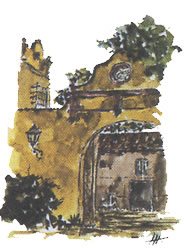Sebi Wallemia qualitative and quantitative culture; Molecular diagnosis (PCR).
Information 02/01/16.
Wallemia sebi (Fungi, Basidiomycota, Wallemiaceae) is a xerophytic fungus can be found in products with low water activity (a w), as products bakeries (cakes, bread), sugars, peanuts, cereals, hams, meats salted , dried fish, house dust, soil and salt. It is considered xerophytic, ie able to survive in arid environments or substrates with little free water (water activity -a w - from 0.69 to 0.997). It develops slowly in the usual means of fungal culture, so their growth is masked by other fungi fastest growing. The use of selective media for fungi xerophilic has allowed agricultural environments found in many parts of the world. Culture for isolation on culture media must be used with limited activity of free water, solutes as glycerol, high sugar content or high salt. Rarely it has been isolated cases of human infection. It is considered one of the causative agents of pneumonitis (farmer 's lung) with IgG antibodies, or allergic bronchial asthma boxes. This fungus produces a toxic substance (walleminol A).
In the solid media with low water activity, it develops into slow - growing colonies brown fine velvety structure. Asexual conidia round and rough surface, the only ones to appear in cultures appear in long chains from Conidiogenous grouped cells formed in the hyphae, which usually appear in groups of four.
By its slow growth in culture, molecular methods are a suitable alternative.
Tests in IVAMI
- Qualitative culture.
- Quantitative culture.
- Molecular diagnosis (PCR).
Sample Type
- Any sample with low water activity where you want to discard their presence (bakery products (cakes, bread), sugar, peanuts, cereals, hams, salted meats, dried fish, house dust, soil and salt).
Preservation and shipment of sample:
- Refrigerated (preferred) for less than 2 days.
- Frozen: over 2 days.
Delivery term:
- Culture for isolation: 15 days
- Molecular diagnosis (PCR): 48 to 72 hours.
Cost of testing
- Consult ivami@ivami.com

